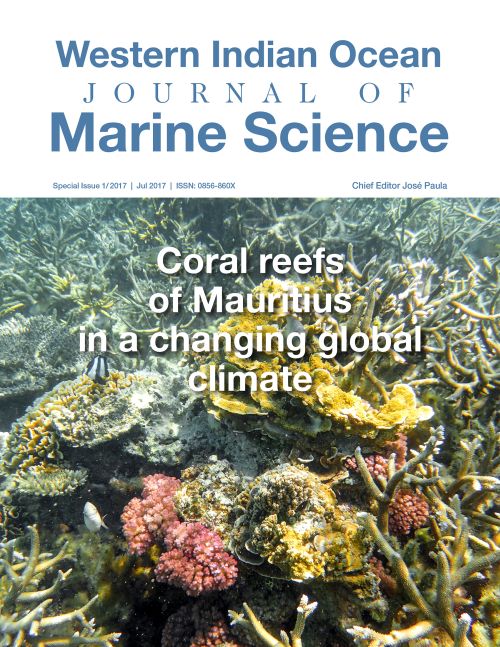Main Article Content
Chemical and biological characteristics of Albion reef in the South-West of Mauritius Island with special reference to primary production and N2 fixation of benthic substrata
Abstract
The role of heterotrophic bacteria, pico-cyanobacteria and benthic cyanobacterial mats was assessed in the cycling of organic carbon and nitrogen in the Albion lagoon, Mauritius. Surveys and sampling for biological and chemical parameters were undertaken at three locations along one northern (T1) and one southern (T2) transect perpen- dicular to the shore. Low levels of nutrients showing a typical oligotrophic condition promoted by a rapid water exchange with oceanic waters characterized this lagoon. A general trend in zonation was observed from the shore with seagrass beds followed by sand and rubble, with cyanobacteria forming mats. Coral cover increased towards the reef crest with dominating Porites spp. and Acropora spp. colonies, however coral cover was not higher than 20%. Heavy grazing of pico-plankton was detected in the middle of the lagoon between T1 and T2. In situ incubations on di erent substrata (coral rubble, cyanobacterial mats and surrounding seawater) revealed maximum primary pro- duction and nitrogen xation rates of cyanobacterial mats, with respectively 1-2 and up to 2 orders of magnitude higher levels found than other substrata. This study showed that cyanobacteria mats and coral rubble substrata con- stituted an important source of new nitrogen for the whole lagoon.






